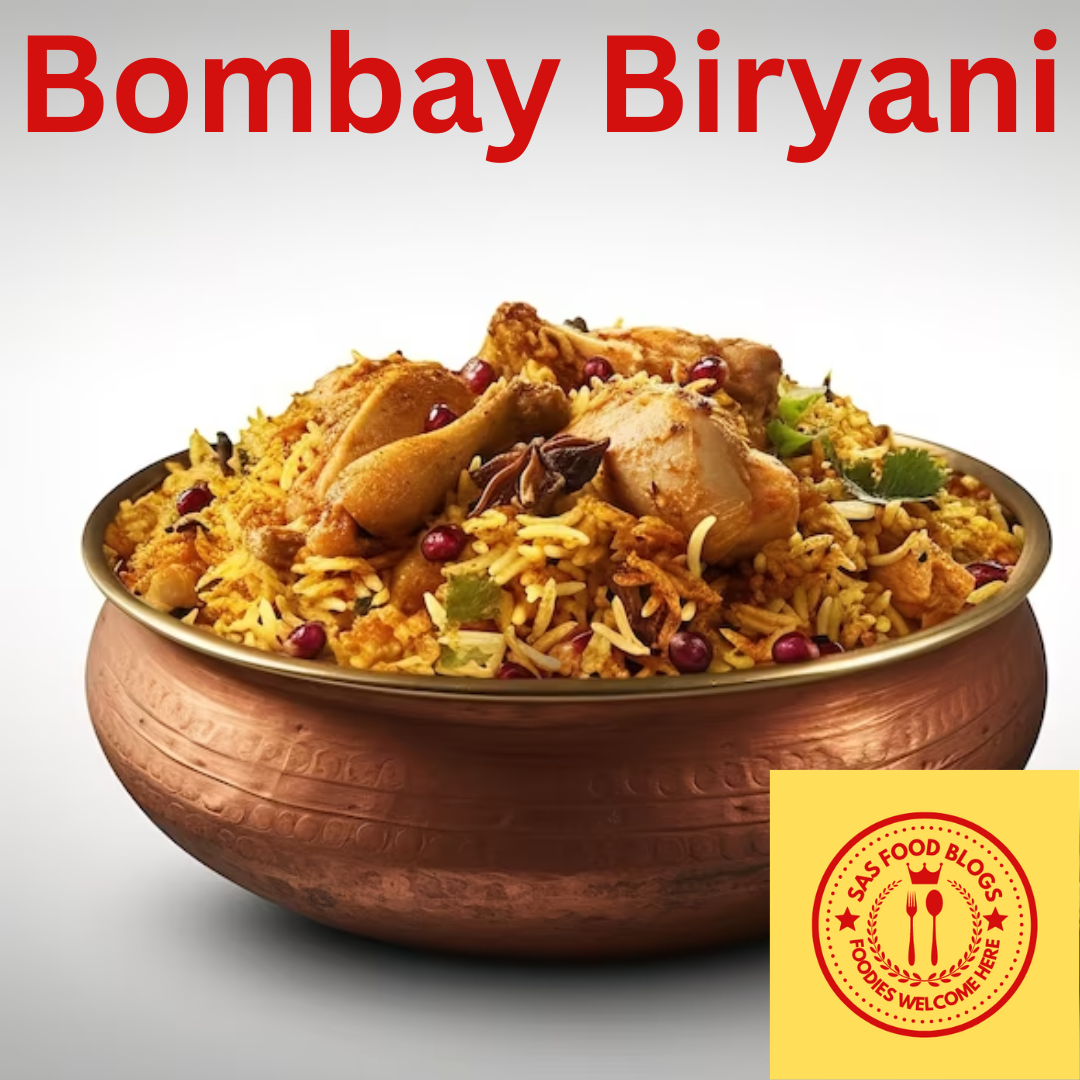How to make Bombay Biryani?
Hello Friends welcome to SAS FOOD BLOGS, Today we are going to see how to make Bombay Biryani.
Bombay Biryani, also known as Mumbai Biryani, is a popular and flavorful rice dish that originates from the city of Mumbai (formerly known as Bombay), India. It is a fusion of the traditional Biryani, which has Persian roots, with local Indian spices and flavors. Bombay Biryani is known for its vibrant taste and the use of potatoes, which is a unique characteristic compared to other regional Biryani variations.
INGREDIENTS:
- Basmati Rice – 2 Cups (soaked for about 20 minutes and drained)
- 500 grams bone-in chicken
- 2 medium-sized onions, thinly sliced
- 2 medium-sized tomatoes, chopped
- 1/2 cup plain yogurt
- 1/4 cup chopped cilantro (coriander leaves)
- 1/4 cup chopped mint leaves
- 4-5 green chilies, slit (adjust according to your spice preference)
- 1/4 cup fried onions (optional, for garnish)
- 1/4 cup milk
- A pinch of saffron strands (soaked in milk)
- 2-3 tablespoons ghee or vegetable oil
- Whole spices: 1-inch cinnamon stick, 4-5 cloves, 4-5 green cardamom pods, 1-2 bay leaves, 1-star anise
- Biryani masala (you can use store-bought or make your own blend of spices)
- Salt, to taste
Biryani Masala Ingredients:
- 1 teaspoon cumin seeds
- 1 teaspoon coriander seeds
- 1 teaspoon fennel seeds
- 1/2 teaspoon black peppercorns
- 1/2 teaspoon black cumin seeds (shah jeera)
- 1/2 teaspoon turmeric powder
- 1/2 teaspoon red chilli powder
- 1/2 teaspoon garam Masala
- Grind all these spices together to make the Biryani Masala
Preparation Method
Today’s recipe is delicious and taste recipe that is Bombay Biryani and so let’s gets started.
Step 1 (Bombay Biryani)
- Take a Pan and add ghee and heat it, add the whole spices (cinnamon, cloves, cardamom, bay leaves, and star anise) and sauté until they release their aroma.
- And add the sliced onions and fry until it reaches golden brown.
Then add the chopped tomatoes and cook till it becomes soft. - Now, add the chicken or meat pieces to the pot and cook until they are partially cooked. If you’re making a vegetarian version, you can skip this step and directly add the vegetables.
Step 2 (Bombay Biryani)
- Mix in the Biryani Masala, green chillies, chopped cilantro, and mint leaves. Cook for a few minutes to allow the spices to infuse into the meat or vegetables.
- Stir in the yogurt and cook for another 5 minutes, allowing the meat to become tender and the flavours to meld together. Add salt according to your taste.
- In a separate pot, boil the soaked Basmati rice with enough water until it’s 70% cooked. Drain the water and set the partially cooked rice aside.
Step 3 (Bombay Biryani)
- Layer the partially cooked rice over the meat or vegetable mixture in the pot.
- Drizzle the saffron milk over the rice and top it with fried onions (if using).
- Cover the pot with a tight-fitting lid and cook on low heat (you can place a tava or griddle beneath the pot to prevent direct heat) for about 20-25 minutes.
Once the Biryani is done, gently fluff the rice with a fork, making sure to mix the layers while serving.
Bombay Biryani is ready to serve by keeping the raita by the side, so you can try this recipe in your home and enjoy it and share the recipe with your family and friends.
Benefits of Bombay Biryani:
Bombay Biryani, like many traditional dishes, contains a variety of ingredients that offer nutritional benefits. However, it’s essential to note that Biryani is a flavourful and rich dish, so it’s best enjoyed in moderation. Here are some potential benefits of Bombay Biryani:
Protein: Biryani is typically made with meat, such as chicken, mutton, or beef, which provides a good source of protein.
Carbohydrates: The rice used in Biryani is a significant source of carbohydrates, which are the body’s primary source of energy.
Spices: The spices used in Biryani, such as cumin, coriander, and turmeric, not only add flavour but also offer potential health benefits. Turmeric, for example, contains curcumin, a compound with anti-inflammatory properties.
Vegetables: If you’re making a vegetarian version of Bombay Biryani, it may include vegetables like potatoes, carrots, and green peas. These veggies provide essential vitamins, minerals, and dietary fiber, promoting overall health and digestion.
Antioxidants: Some spices and herbs used in Biryani, like cloves and cinnamon, are rich in antioxidants.
Saffron: Saffron, which is sometimes used to garnish Biryani, is known for its unique flavour and potential mood-enhancing properties.
Comfort Food: Biryani is a beloved dish in many cultures, and enjoying a flavourful meal can have positive effects on mental well-being, providing a sense of comfort and satisfaction.
While Bombay Biryani has these potential benefits, it’s essential to be mindful of its high calorie, fat, and sodium content. The dish often contains ghee or oil, which can contribute to the overall calorie count. Additionally, the sodium content can be high, especially if using store-bought Biryani Masala or adding salt liberally during preparation.
To make Biryani a healthier option, consider using lean meats, reducing the amount of added fats, and adding plenty of vegetables to enhance the nutritional value. Also, practicing portion control and enjoying Biryani as an occasional treat rather than a regular meal can help balance its nutritional impact.
Remember, the benefits of Bombay Biryani should be considered in the context of an overall balanced and varied diet. If you have specific dietary restrictions or health concerns, it’s best to consult with a healthcare professional or a registered dietician for personalized advice.
